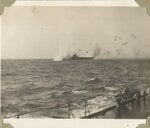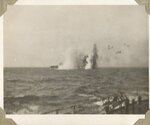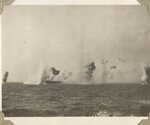Ok, I was thinking on 1941 battles, anyway Peter C. Smith, a dive-bomber enthusiast if there is one, in his Junkers Ju 87 Stuka (Crowood 1998) and Armoured Aircraft Carriers (armouredcarriers.com) agreed that Indomitable was hit by two 250 kg bombs. And what "strong evidence that they used the same on HMS Illustrious in Jan 1941." there is. I have not seen a German report showing the ordinance used in the attacks but Report: (armouredcarriers.com) says that the 6th hit was at first estimated to be made by a 500 kg bomb but then re-valuated to be a 1000 kg bomb, but according to Smith it also was a 500 kg bomb as were the 4th and 5th hits and the 8th [I corrected this, I had missed the one hit of undetermined size achieved during the last attack on 10th Jan. which was the 7th hit] on 16th Jan at Malta.The Luftwaffe (OB from Operation Pedestal) was flying JU87Ds and I know that they were carrying 1000kg bombs, because they hit Indomitable with two of them. In the Fall of 1941 Ju87Bs hit the Soviet battleship Marat with 1000kg AP bombs and there is strong evidence that they used the same on HMS Illustrious in Jan 1941. The JU87R could carry the same bomb weight for short range missions, and due to the operational requirements of the Malta Convoys FAA carriers had to operate within the JU87B radius of action with a 1000kg bomb. I already indicated, in a prior post (#245), that the JU87-R traded bomb weight for extra fuel for long range missions.
On Marat, IIRC something what I read decades ago, a few 1000 kg bombs were allocated to some specially selected pilots for the attack, not something to be used by an ordinary pilot flying Ju 87 B.
Last edited:



